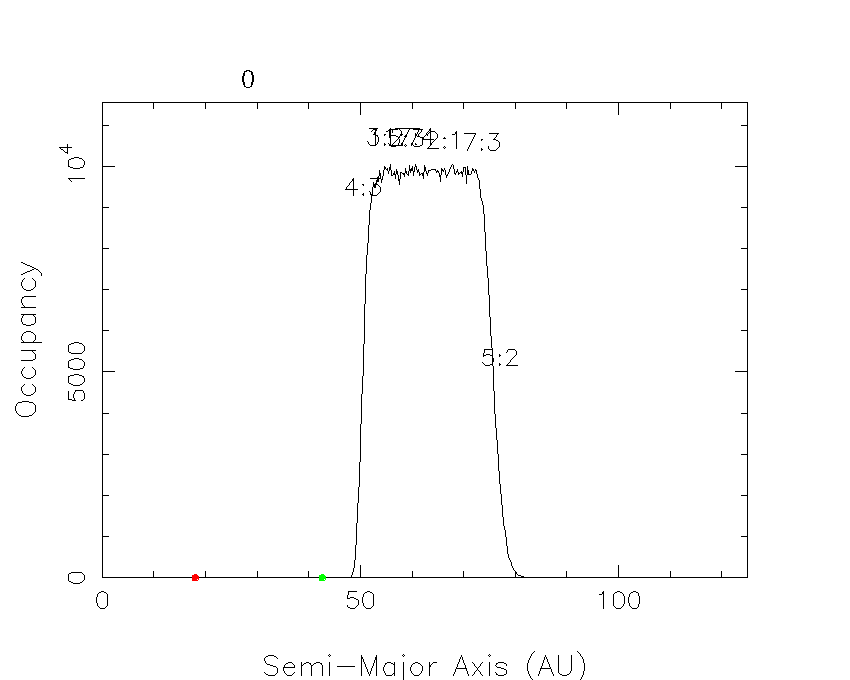



My more recent simulations have focussed on the Epsilon Eridani system, and have involved large (100,000) particle simulations, where particle numbers are kept constant by replacing particles as they are destroyed by accretion onto the star or ejection from the system. This has allowed the investigation of multiple planet, eccentric systems such as is suspected to be responsible for the observed structure seen in the Epsilon Eridani disk.
In this model, the inner planet is responsible for clearing the hole in the disk, while the outer planet generates the asymmetries observed in the outer region of the disk. The example below shows the evolution of a system modelling Epsilon Eridani over 10 million years. The system contains two planets and 100,000 test particles. The inner planet has a mass of 3 Jupiter masses, has a semi-major axis of 18 AU and an eccentricity of 0.05. The outer planet has a mass of 0.1 Mjup, has a semi-major axis of 41 AU and an eccentricity of 0.3.
| Simulated observation of the system over the course of one planetary period for the outer planet (270 years), after 1 million years. No significant structure has emerged. The system is observed face-on. |  |
| Simulated observation of the system over the course of one planetary period for the outer planet (270 years), after 10 million years. The disk now shows significant asymmetries that vary over the course of the planetary period. In this simulated observation, the system is observed from an inclination of 30 degrees from face-on, consistent with estimates of the Epsilon Eridani system |  |
| Animation plots particle occupancy vs semi-major axis as the system evolves. Initially, all particles are confined within the initial starting parameters. Over time, they disperse and resonances become apparent. |  |
| Image shows the rate at which particles are destroyed and recreated over time. It is apparent that the system is approaching steady state after only 10 million years, although a longer simulation would probably show finer detail. |  |